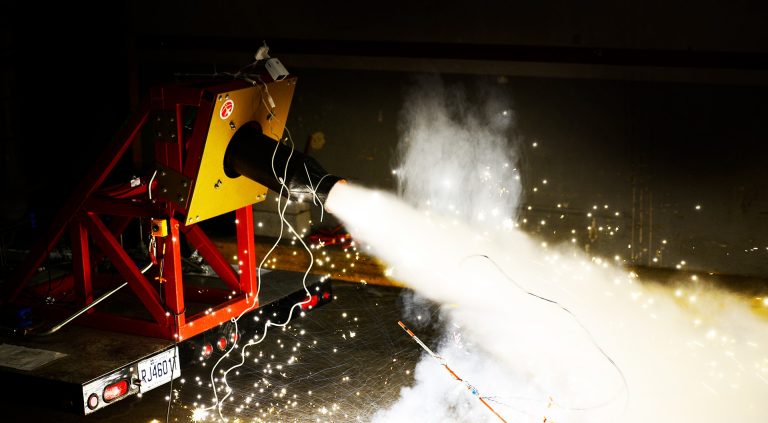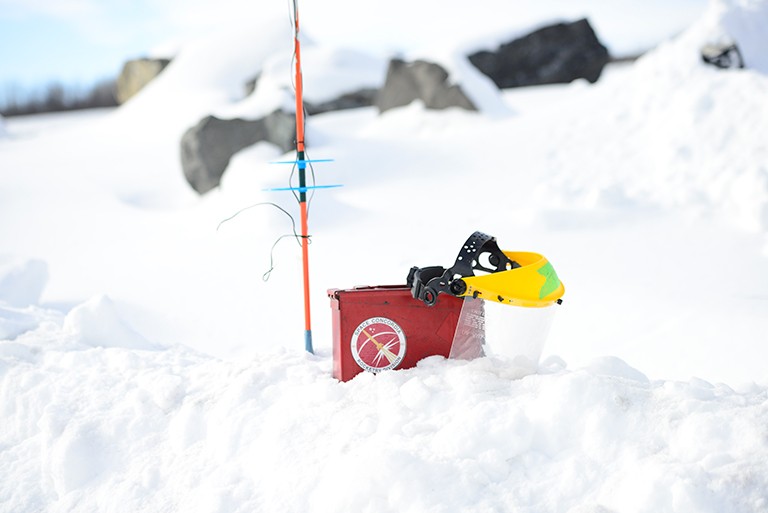Concordia students win 1st prize for rocketry design at the Base 11 Space Challenge

Space Concordia’s Rocketry Division is no stranger to the podium. The team had several notable finishes at the Intercollegiate Rocket Engineering Competition from 2015 to 2018.
After its win three years ago, the team set its sights on outer space and entered the Base 11 Space Challenge: a race to build the first civilian liquid-fuelled rocket to surpass 100 kilometres in altitude. The team that places first walks away with bragging rights and $1 million USD.
The Base 11 Space Challenge is judged in three phases: a preliminary design report, completed in summer 2019; the submission of a critical design report; and, for those that make it through the first two phases — the December launch!
Competing with 35 of the top universities in North America, the Concordia team has completed phase one and earned a $15,000 USD second-place prize for the preliminary design. Dassault Systèmes, one of the competition sponsors, also issued a surprise award of $2,500 USD to the team for the early adoption of its software during the competition.
For phase two, the team placed first this April after submitting its critical design review. The winning submission included a 1,600-page report outlining the rocket and its systems and documented the team’s thought process and analysis from start to finish. The Concordia team is now one of eight teams aiming for the final frontier.
 Space Concordia rocket engine ignitor in the snow.
Space Concordia rocket engine ignitor in the snow.
‘We can’t skip any steps’
Space Concordia is a student organization based in the Gina Cody School of Engineering and Computer Science. The Rocketry Division members will complete a static test firing to ensure the engine is fully functional and will compete in the Launch Canada Challenge this summer to test their engine and propulsion systems as part of the competition’s Subsystem Design Challenge.
And, before heading to outer space, the team will have to build its rocket.
This most recent rocketry project stands 11 metres tall with a 22-metre-high launch tower. Students will create a liquid engine, a new technology for this group that will require the entire configuration of the rocket’s systems to change.
The project’s chief of engineering is Camille Bernier-Tremblay, a mechanical engineering student in her last year. “We started with a few ideas of what we wanted to accomplish in the design of our rocket and made prototypes to see what could work before we moved on to manufacturing and testing,” she explains.
“We can’t skip any steps. The project needs to be managed closely,” she says. “I need to understand each team’s timeline and the personnel available to them at any given time. And I need to make sure they have the resources to support their manufacturing plan.”
By designing and building the rocket’s structure as well as its flight performance systems, propulsion, avionics, launch tower and de-spin, and ensuring the rocket can be recovered safely after launch, students are getting hands-on experience.
“When I joined Space Concordia in my first year at Concordia, I had a steep learning curve. But I was able to understand complex concepts with the help of my peers and the technicians in the machine shop,” Bernier-Tremblay recalls. “Sometimes I was learning about testing and manufacturing for the rockets before I even learned about it in my classes.”
Capstone collaboration
The Rocketry Division added an experiential learning component, welcoming four Capstone project teams from the Department of Mechanical, Industrial and Aerospace Engineering to contribute to the project.
Leveraging the know-how of 20 final-year students and hundreds of hours of labour, these teams have contributed the launch tower, manufacturing of a rocket engine and testing of ignitors to ensure sufficient oxygenation, as well as designing and testing propellant tanks that are integrated into the rocket’s skin.
Bernier-Tremblay was a member of the Capstone team that did design and materials testing to arrive at the optimal composite configuration for the fins. She started and finished her degree with Space Concordia.
“The level of initiative and resourcefulness these students continue to demonstrate is inspiring,” Krzysztof Skonieczny, associate professor of electrical and computer engineering and faculty liaison for Space Concordia. “I am so impressed by what they achieve and how they continually strive to outdo their previous accomplishments.”
Learn more about Concordia’s Department of Mechanical, Industrial and Aerospace Engineering.
Follow Space Concordia on Facebook and Instagram.



